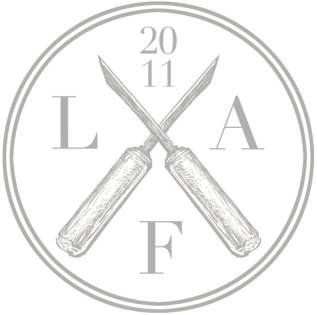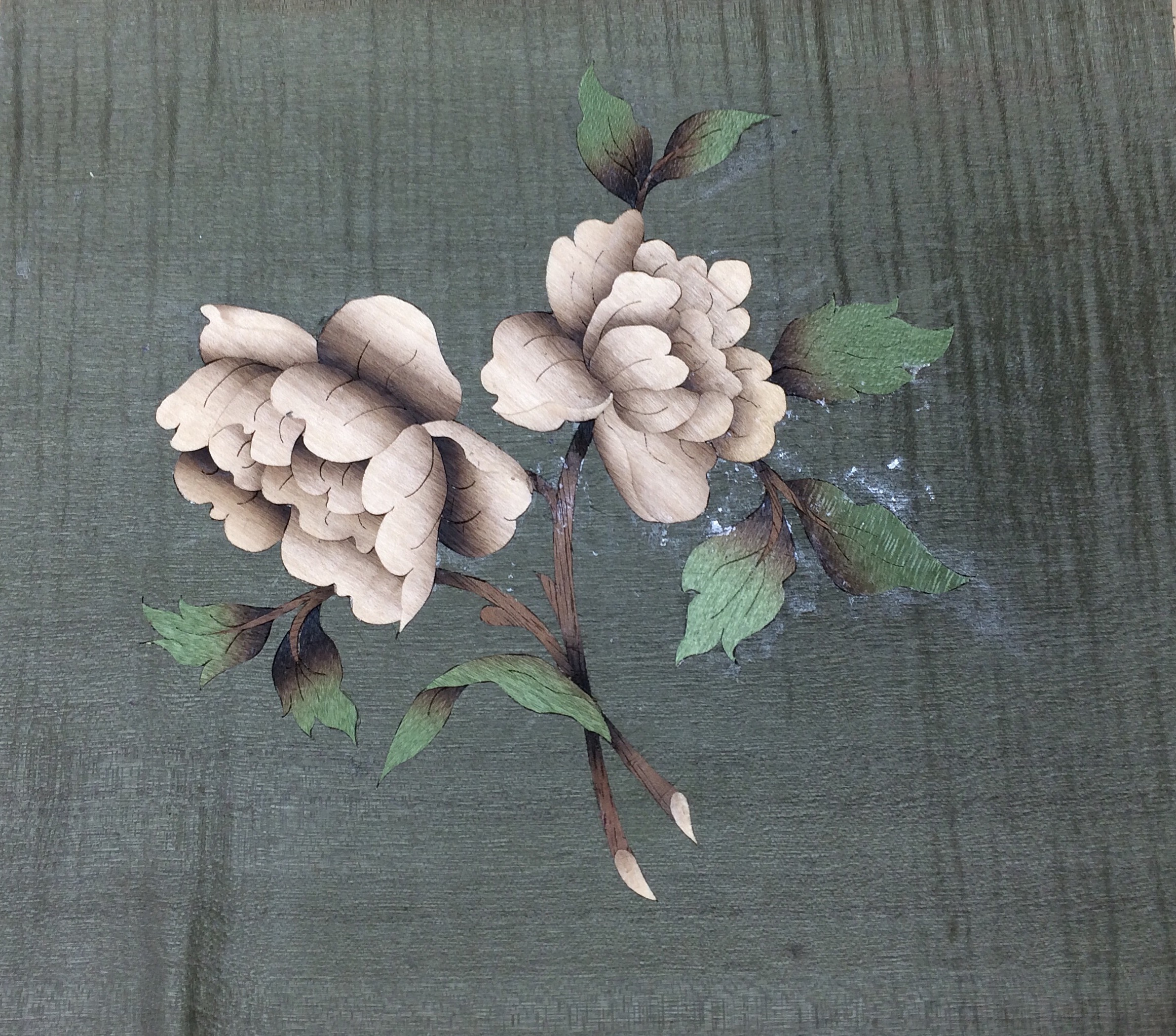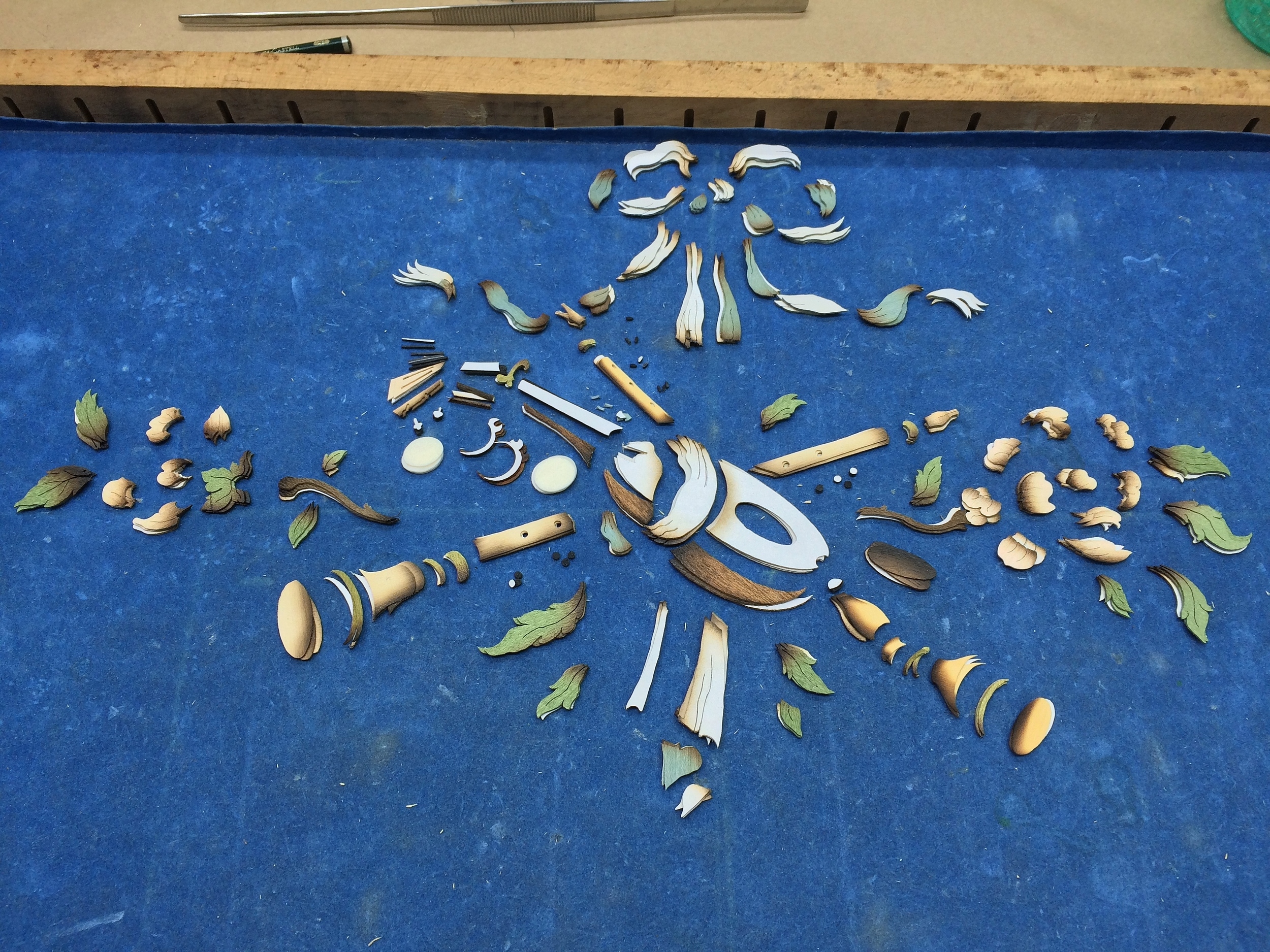Fleur éclaté, my second advanced study piece.
The goal is to cut the exterior lines in piece by piece and the interior lines in Boulle technique, but to leave no gaps in the final piece. If you are familiar with Boulle technique you know that it leaves a saw kerf gap in the final design. Here we are using the éclaté technique to eliminate those gaps but also keep the advantages of the much faster process of Boulle technique for the interior lines.
This is achieved by compensating for the thickness of the saw kerfs by making a cut in the paper design and spacing them out so that the extra material internally will close the gaps and push the pieces tightly together. These cuts must be planned out carefully and I plan on doing a blog post in the future explaining it further.
To keep this organized I’ll number the explanations for the photos working from left to right for the entirety of the post. 1. refers to the top left, 2. top middle, 3. top right, 4. bottom left, etc.
1-3. Here are my test samples. Notice the big gaps. As mentioned before this technique allows you to cut out a piece more quickly than with the traditional piece by piece method but it also allows you to do something very interesting with the grain. Because the flower is cut all at once the grain flows through it seamlessly and with no gaps!
4&5. Here I've dialed in the method for cutting this particular flower through some creative problem solving and practice pieces. No gaps!
6. I used 1.5mm thick maple for the test pieces. Éclaté in the tray!
Here is the final design for the 2 flowers that make up the actual marquetry panel. I made a packet of curly maple and set to work.
I have indicators drawn in red to remind myself of places where I either need to a) remove the line plus a saw kerf of material, b) remove the line totally, c) split the line in half, d) leave the line, and e) leave the line plus a saw kerf of material. This applies to the exterior lines of the flower only. The interior lines should be split down the middle.
It is complicated and requires control and precision in cutting. It is difficult to cut the transitions smoothly.
Here I am cutting out the leaves for the panel with straight piece by piece technique. Note the "holes" at the tips of the leaves. This is an excellent method for making turns that are tighter than 90 degrees. Because all of the veneer outside of the leaf doesn't matter I can cut into it, make a sharp turn, then come back to the line.
1. Laid out in exploded view to make sure I have everything.
2. Here I've made my shading guide. It's important to plan out your shading as it can determine the success or failure of a piece.
3&4. A reasonably good job of following the shading.
1. This is the background packet which is cut after the interior elements. This piece has two bridges. Bridges keep isolated or weak background elements in place so they don't move when the background is pressed onto the assembly board with hot hide glue. After this the bridges are cut with the tranchet so the interior elements can be placed inside the background.
2. The bridges in the actual background veneer. Notice the background element is suspended by them.
1. Here the piece is assembled face down.
2. Pressed onto a substrate.
3. Alcohol to show the colors once it's French polished.
4. Ready for final sanding and French polishing. This is the first éclaté piece done in North America in over 10 years.
My diploma!
































